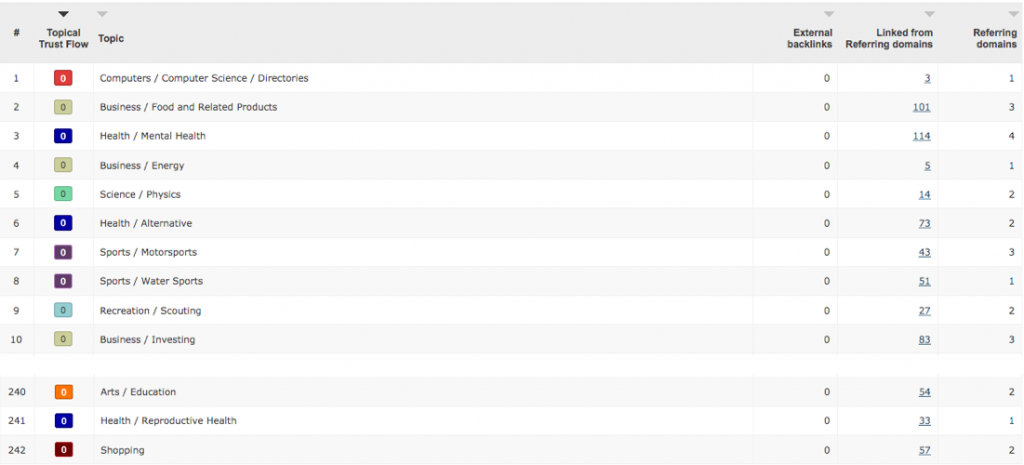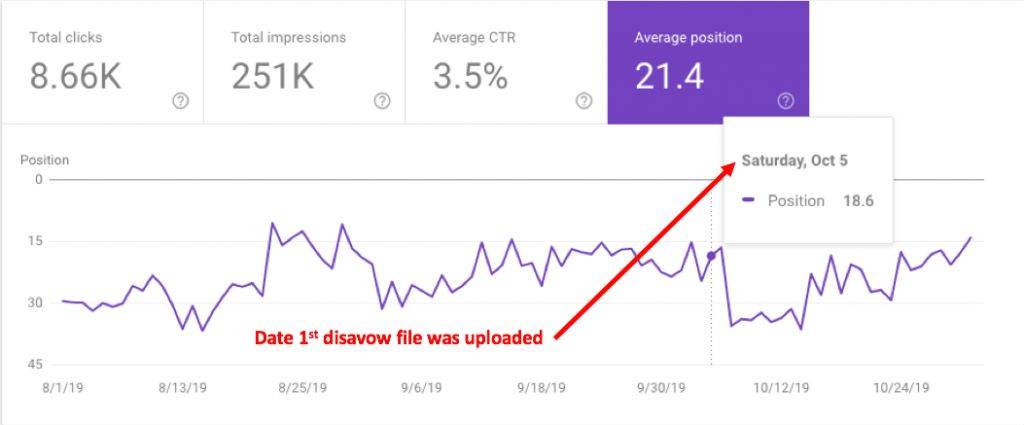July 2024: Parts of this post from 2019 may not be very relevant today. Identifying links that provide good Link Equity and sifting them from less valuable ones helps with client reporting and helps identify authoritative sources that link to you. Learn more in this post about disavowing backlinks in 2024.
During the recent Majestic Workshop on backlinks held in Milan at SMXL, I presented a case where a website suddenly lost significant organic traffic following a massive and impulsive surge in backlink spam.
In this post, I’m going to describe:
- what happened;
- which recovery actions were implemented;
- the results obtained.
By no means is this case history to be viewed as “hard evidence” that spam nofollow backlinks are a certain threat to your performance. I am a firm believer that there is no general rule or set of guidelines when it comes to SEO and organic traffic. As the complexity of the algorithm(s) increases, there is more opportunity for complexity to get the upper hand and act in an unforeseen way.
Now, to the case study…
The Facts
We are dealing with a very small website with content, mainly in Italian, on “Lega Serie A” – Italian Football.
The website:
- is almost 6 years old;
- has been constantly updated over the past 2 years;
- has a focus on data and statistics on referees;
- did not have any backlinks.
At the beginning of the season, the website was enjoying organic traffic for a select number of keywords when suddenly it “tanked”: that handful of referee-related keywords had lost traction in the SERPs.
When I examined the situation, the first thing that came to mind was a change of heart by Google. After all, algorithmic updates are on the agenda every other day, but I decided to take a closer look.
For this website, there had been no previous backlink checking with Majestic so I set up an account, and to my surprise, I found this:

The website had been at the centre of an automated backlink-building activity overnight. Links were in blog post comments and, therefore, nofollowed. I studied the Topical Trust Flow of these backlinks:

A vast array of subjects, from science to business to computers – all off topic.
I set up a Majestic campaign to follow the evolution of spam, hoping the build-up of spam backlinks would stop sooner rather than later.
In theory, these links were not supposed to have had any impact whatsoever on organic traffic and rankings – Google has made this public statement many times – for example, here:
“…having links (even a large number of them) with rel=nofollow pointing to your site does not negatively affect your site. We take these links out of our PageRank calculations, and out of our algorithms when they use links.”
John Muller – Search Engine Journal, June 14, 2018, No Follow Links and Search Ranking
- Was the drop in organic traffic algorithmic?
- Did rankings for those keywords drop because of the backlink SPAM?
I didn’t know, and I don’t know today. What I DID KNOW is those links felt like unwanted graffiti. The way I saw this: Let’s take a stand on these links and tell the search engines we have nothing to do with them and see what happens.
What I did next
I prepared for a disavow procedure.
I downloaded all the links, starting from the complete backlink profile. With the new Link Context, I could analyse the links and establish their nature in minutes.
The backlink profile analysis identified hundreds of domains. My approach to disavowing is to disavow at domain level. I prepared and uploaded the disavow file. Instead of waiting for Google to make a move, I try to “encourage” spidering of the source pages where the spam links are placed.

Majestic Campaigns delivered reports on new backlinks, which were processed, and new spam domains were added to the disavow file. The spam backlink building continued on a much lower level for a few more weeks.
Performance began to pick up, with average positions rising, especially for the clique of referee keywords. They still have a positive trend with better rankings but haven’t recovered completely.
Some Considerations
Well, let’s start with the facts:
- Website was ranking
- The website suddenly had more than 10.000 backlinks
- Website lost rankings
- Spam links (all nofollow) were identified
- Disavow file was created, uploaded and constantly updated until backlink spam ceased to manifest itself.
- Rankings began to improve and are still on the rise towards recovery
Is there a direct correlation between the nofollow spam links and loss in rankings?
Who knows? There’s too much going on out there. I trust my judgement; I have been in the business for 25 years!
But this doesn’t mean I know it all – not in the least. In fact, I researched and came across a post that says something very similar to what I witnessed and experienced from a different point of view. Adam, the post’s author, tells us how a nofollow backlink significantly improves rankings for a specific keyword. So, if we can assume this is true, then the contrary could also true:
If a nofollow backlink can help rankings it can also hurt them
Sante J. Achille – my 2 cents on nofollow backlinks
If we go down this rabbit hole and look at the bigger picture, maybe what happened is something like this:
Website A (the subject of this post) was living a healthy and very low-profile digital existence. Google decided that, although a microscopic, insignificant website, it deserved to be featured for some queries where Website A sat in the Google sunshine amongst the big players. But suddenly, Website A, from one day to another, features a backlink profile that is clearly artificial and spam-related. Google then (algorithmically) thinks: “Why did you do this? There was no need for this – it’s totally uncalled for”, and frowns upon Website A.
Website A becomes aware of what’s happening and goes back to Google and says (with a disavow file):
“Hey, Google, I didn’t do this – I have nothing to do with this mess; please disregard these spam backlinks and give me that Google sunshine I was enjoying up until last August”
Conclusions?
The only general consideration I can see is that there is no general rule. In principle, I don’t think fussing over funky links is worth the effort; however, every situation is different and requires a dedicated analysis.
Have you experienced a falloff in rankings following blog spam? Feedback from those with similar experiences, as well as opinions and debate, are welcome.
July 2024: It is highly unlikely that an impulsive spam link building effort such as the one described in this post would disrupt a website’s rankings today. The conclusions of this post remain relevant: it wasn’t worth fussing over toxic backlinks in 2019, and it is even less so nowadays.
- Is metadata important in SEO? - October 30, 2023
- A Simplified Approach to Content Creation using NLP - May 11, 2023
- The unknown side of search: when words become numbers - November 18, 2020







Thanks for posting this. This is the kind of SEO analysis that I appreciate. No speculation, no posturing, just some facts regarding a situation. As you said, we can never know everything.
The one obvious question is who initiated this backlink gambit and why?
December 6, 2019 at 2:02 pm